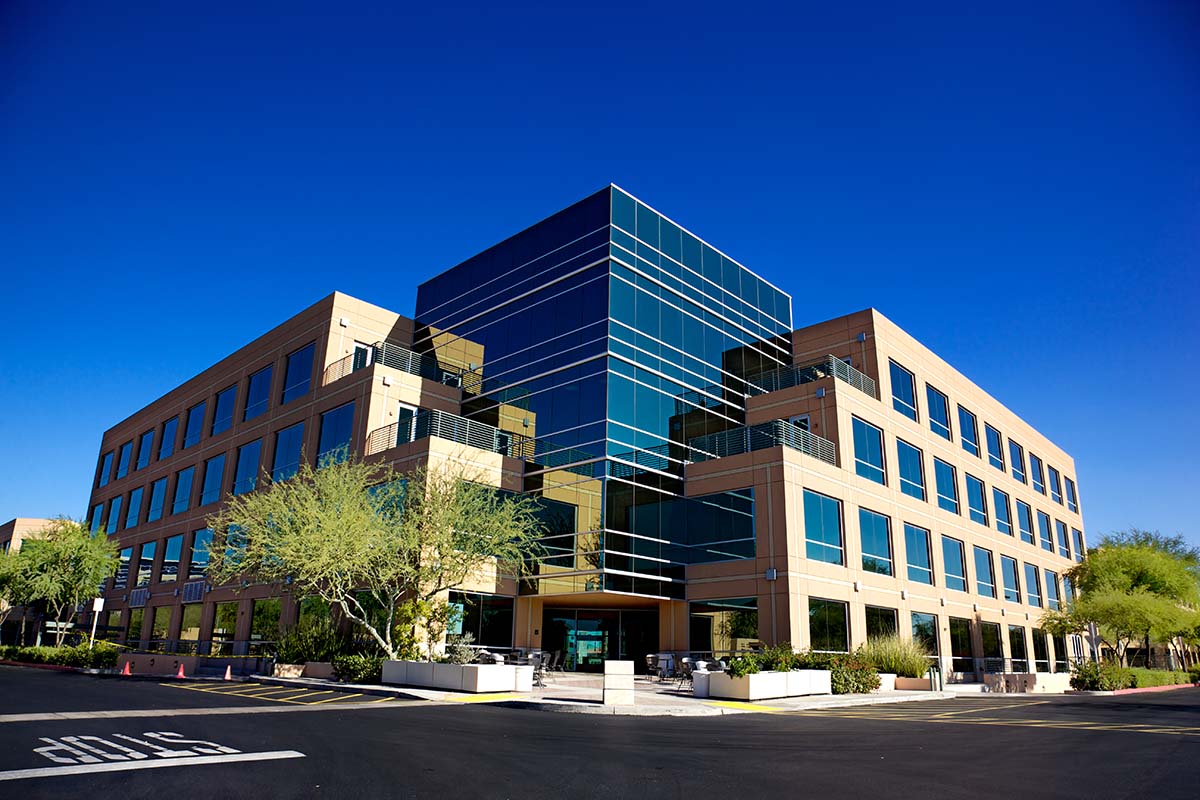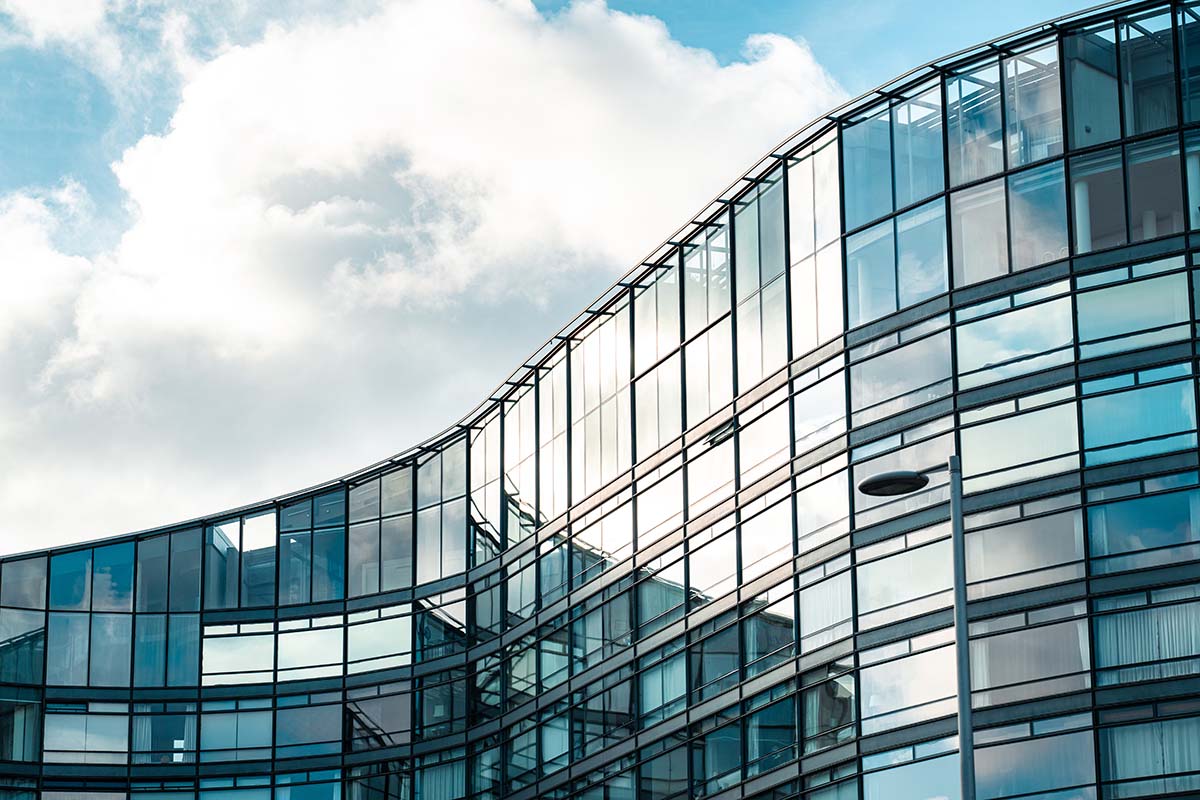In the pursuit of a more sustainable future, the commercial building sector is undergoing a transformative shift as it pertains to HVAC practices.
Consumers are starting to demand commercial buildings use less energy, have next-to-nothing for emissions, and also provide owners the satisfaction of long-term financial benefits and a lowered carbon footprint.
As the market adapts, an emphasis is being put on sustainable building practices, which are crucial as they contribute to overall decarbonization goals, improved energy efficiency, and more of a reliance on renewable and environmentally friendly energy sources.
The push for sustainability in the HVAC industry is being driven by a number of different factors, and whether it’s due to consumer demand or through regulatory mandate, the good news is that there are more options now than ever that can make even the largest of projects considered “sustainable.”
How ‘Sustainable’ is Quantified
As Mark Lessans, senior director of sustainability and regulatory affairs at Johnson Controls, eloquently put it, “A truly sustainable building is one that meets the needs of its occupants and its surroundings, without relying on scarce resources or causing harm to its environment.”
A sustainable building can also be defined by its ability to operate in an environmentally responsible and resource-efficient manner throughout its lifecycle, as Travis Dauwalter, senior director offering management, sustainable building technologies, Honeywell Building Automation, noted, and this also encompasses energy efficiency, water conservation, the use of sustainable materials, indoor environmental quality, site selection, waste reduction, and overall design and operation.
In the context of climate change, the focus shifts more toward zero emissions or a building that operates efficiently on zero-carbon energy sources and offsets any other residual emissions.

CLIMATE CONSCIOUS: In the context of climate change, a commercial building shifting toward zero emissions or zero-carbon energy sources can help it to offset other residual emissions. (Courtesy of Getty Images)
Stephen Clark, director of intelligent solutions at Xylem, said when thinking about the word “sustainable” as it relates to buildings, the context of the materials used and the construction processes need to be a consideration.
“Ideally, if you build something from new, you can ensure sustainable building practices from the ground up, but retrofitting buildings is another key strategy, especially given the current volume of commercial properties and the shift toward remote work,” Clark said.
But in order for a building to be sustainable and efficient, everyone agreed that doesn’t mean it has to be a new build.

RETROFIT TO THE RESCUE: A sustainable commercial building doesn’t need to be a new build, in fact, most are now retrofits as they reduce environmental impact due to the preservation of existing structures. (Courtesy of Getty Images)
“While new development offers a clean slate for integrating smart building technologies, retrofits can also be upgraded to help meet net-zero targets,” Lessans said. “In the U.S. alone, a staggering 100 billion square feet of buildings currently rely on installed systems that are old and inefficient. In addition, 70% of today’s building stock will continue to be in operation in 2050. These realities make it essential to ensure buildings of all types and ages are equipped to meet the sustainability demands of today — and tomorrow.”
Even major cities are increasingly turning to retrofits over new construction as a way to further lower carbon emissions and reduce environmental impact due to the preservation of existing structures. Dauwalter said. A retrofit also correlates to a reduction in construction waste and a faster implementation process.
“Retrofitting existing buildings with modern, sustainable technologies and practices can help significantly enhance their sustainability,” Dauwalter said. “This can include upgrading insulation, installing energy-efficient HVAC systems, incorporating renewable energy sources, and improving water management systems. Retrofitting not only extends the life of the existing building but also reduces the environmental impact associated with demolition and new construction.”
Regardless if the building is new or a retrofit, Clark said the potentially biggest consideration needs to be that the building is running efficiently from an operational standpoint — for example, implementing efficient technologies, such as smart pumps, ensures that systems run only as needed, reducing energy consumption and operational costs and delivering maximum sustainability gains for minimal investment.
“It's also essential to manage the life cycle and disposal of replaced equipment to ensure a positive overall environmental impact,” Clark said. “For instance, on paper, something may look more sustainable because you have new equipment, but holistic sustainability only occurs when you’re also taking note of the equipment you’re pulling out and accounting for its safe disposal and overall product life cycle.”
The Heart of the Operation
In order to achieve everything mentioned above, engineers and contractors need to give careful consideration to the equipment they choose and also how that equipment is going to be operated.
For the goal of reduced emissions, electrification is today’s method of choice.
“To fully electrify a large commercial building, we need to shift away from traditional boiler technology and move toward chillers and heat pumps, which use electricity for most heating and cooling needs while reducing reliance on local fossil fuels such as gas or oil,” Clark said.
New technology is making this new strategy increasingly more feasible, even in enormous structures.
“Large commercial buildings with centralized hydronic heating and cooling need to shift from boiler systems to air-to-water and water-to-water heat pumps,” Lessans said. “Fortunately, innovations in heat pump technology are making it easier than ever to replace fossil fuel-based heating technology.”
According to the U.S. Energy Information Administration, fewer than one-third of US commercial buildings are fully electric. While a majority use electricity for cooling, a much smaller percentage use electricity for heat.
“The electrification of heating represents a great opportunity to fully electrify a building,” said Eddie Rodriguez, senior product manager, Danfoss Turbocor. “This change involves switching from using traditional fossil fuel appliances to electric heat pumps. Electric heat pumps offer several advantages including higher efficiency compared to traditional boilers and help to lower harmful carbon emissions to the atmosphere.”
Aside from new technology, an older, tried-and-true method is also making a big resurgence in the sustainability realm — geothermal.
“Geothermal is an important heat source for some of these system designs, while thermal energy storage and simultaneous heating and cooling strategies also expand the breadth of air-to-water and water-to-water heat pump applications,” Lessans said.
Integrating geothermal can help further enhance the building's energy efficiency and sustainability since these systems utilize the Earth's stable temperatures to provide heating and cooling, offering a more energy-efficient alternative to traditional HVAC systems, Dauwalter said.
“By implementing geothermal heating solutions alongside electrified HVAC equipment, buildings can significantly take steps toward reducing their reliance on fossil fuels and decrease their environmental impact,” Dauwalter added.
According to Clark, one of the reasons the industry never really saw the widespread adoption of geo was usually cost.
“So, while geothermal is undoubtedly renewable and ticks many sustainability boxes, a common theme in my thinking when considering renewable energy solutions is to look at both sides of making buildings more efficient, weighing the long-term payback against initial costs,” Clark said. “Overall, I believe we need to strike a balance between installing efficient equipment and ensuring a reasonable return on investment, especially with newer technologies that may still be emerging in the market.”
Optimizing the System
While more efficient equipment is paramount for sustainability, how it’s operated is equally important to the equation. In order to gain a high level of optimization, software and artificial intelligence (AI) have a significant role to play.
“The software that we use, particularly in our conditioning monitoring products, is integral to maintaining sustainability in buildings,” Clark said. “These products are designed to optimize energy usage and enhance operational efficiency.”
The pumps, Clark said, need to be running at their top efficiency point consistently to ensure minimum energy consumption. Incorporating features like remote monitoring software provides operators with specific metrics on the machines and the ability to spot potential issues, which in turn, adds another layer of efficiency and helps to extend the life cycle of the equipment, a key aspect in sustainability.
“Operating a piece of equipment for 20 years instead of 10 years means fewer new materials, reduced shipping, and a significant environmental impact,” Clark said.
AI also is playing an increasingly substantial role in reporting and enhancing controls, which Lessans said gives building operators more solutions to meet their optimization and performance targets while enriching the experiences of the occupant.
“AI enables facilities of all sizes — even large, complex campuses — to make faster decisions that increase the efficiency and reliability of HVAC systems,” Lessans said. “In addition, AI can help technicians troubleshoot customers’ systems. Consider how much more value a service technician can provide if they can find a solution up to 30% faster than with a previous method. The time savings enabled by AI would free the technician to help the customer further optimize the system or to provide service to the next customer.”
Dauwalter noted aside from reduced energy consumption and a better user experience, AI and advanced software can also improve things like indoor air quality (IAQ).
And in large buildings, for instance, Dauwalter said even with multiple cooling systems, advanced analytics can optimize chiller operation by allowing some units to be on standby while still maintaining occupant comfort and efficient operations, thus reducing energy consumption.
“Enhanced by AI algorithms, a building management system (BMS) can detect occupancy levels and adjust HVAC operations accordingly, helping minimize energy use in unoccupied rooms and optimizing conditions in occupied spaces to enhance comfort and productivity,” Dauwalter said. “AI and advanced software can then help reduce energy consumption, carbon emissions, and utility bills while helping extend equipment life by optimizing operation time and energy management.”
Rodriguez can these advanced software tools, like remote monitoring, can also reduce downtime.
“Cloud-based tools provide quick access to chiller performance and offer advanced warnings to ensure service and maintenance requirements are met,” Rodriguez said.
senior director of sustainability and regulatory affairs
Johnson Controls
Driving Forces Behind the Shift
Environmental consciousness or government regulations? It’s almost a “chicken or the egg” question for the HVAC industry as of late, but the fact of the matter is that more customers are looking to increase sustainability and lower their carbon footprint.
“The accelerating interest in sustainable buildings is truly the result of both market ‘pulls’ and regulatory ‘pushes,’” Lessans said. “As building owners become more aware of the importance of climate action, decarbonization goals are becoming a long-term performance indicator. Incorporating advanced building automation and digital technologies is among the most effective sustainability investments — and one that also happens to improve the bottom line.”
Lessans said an estimated 40% of global greenhouse emissions come from buildings, and modernizing their HVAC systems can help achieve decarbonization goals. Through updates to the latest generation of high-efficiency systems, transition to low-GWP refrigerants, or leveraging data and digital systems, it’s not only possible to achieve sustainable commercial buildings, it’s actually quite plausible, and more consumers are starting to realize this fact.
Customers, Rodriguez said, are actually starting to demand sustainable solutions to address concerns with global warming and upcoming refrigerant regulations.
“This push is arising from a need to reduce carbon emissions which can be achieved by converting fossil fuel heating to electric heat pumps,” Rodriguez said. “Similarly, future environmental regulations will restrict the use of refrigerants with high GWP levels. As a result, customers are requiring HVAC systems that are optimized for use with low GWP refrigerants to reduce harmful emissions to the atmosphere.”
While definitely a national trend, Clark said they are seeing some different, localized pushes, especially in places like Europe and the West Coast.
“In Europe, regulations are certainly driving this, more at the individual component rather than the building level. There's talk about increasing the efficiency of pumping units, for example, to comply with European regulations, potentially prompting changes in our technology to enable variable speed operations and yield extra savings,” Clark said. “However, in North America, there are emerging efficiency standards for component parts, with local incentives and regulations often driving the adoption of sustainable practices, effectively making them feasible for new constructions. For instance, regions like the West Coast offer incentives and rebates for installing energy-efficient equipment, making retrofits a viable path to achieving sustainability goals.”
Organizations like ASHRAE are also helping to drive change by providing a framework to see that sustainability standards are being met.
“These standards not only promote healthier indoor environments but also stimulate the demand for sustainable buildings,” Dauwalter said. “By creating clear, enforceable benchmarks for energy efficiency, building owners are encouraged to adopt these best practices and technology to align with regulatory requirements.”
Other Important Considerations
In terms of building efficiency, the benefits of choosing efficient technology can be quite significant in the long-term, Clark said, from both a financial and environmental standpoint.
“If you think about smart pumps in this context, switching from a fixed-speed pump with no drive or technology to a variable-speed pump with smart pump technology can provide around 380 tons a year in CO2 savings,” Clark said. “So, just by minimizing operating hours and using equipment more efficiently with technology, there are significant energy savings to be made.”
Dauwalter noted that compared to traditional commercial buildings, sustainable buildings have the potential to be more efficient, driven by the adoption of cutting-edge technologies like advanced AI, machine learning (ML), and data analytics.
“Additionally, sustainable buildings often command higher rental rates and property values, further enhancing the financial benefits for building owners,” Dauwalter said. “Overall, the investment in sustainable practices and advanced technologies for buildings can help provide long-term savings and competitive advantages for property owners.”
In a recent survey of business owners conducted by Forrester Research in collaboration with Johnson Controls, Lessans said 80% of respondents said implementing or improving their sustainability efforts was a top priority.
“Yet 74% of respondents also noted that their company does not use emissions reporting software. When building owners are familiar with all their options, such as platforms that continually adapt and fine-tune the building environment, they’re better equipped to make informed decisions that optimize energy use, decrease their buildings’ carbon emissions, and deliver healthy indoor environments,” Lessans said. “Contractors, distributors, and other HVAC professionals can play a pivotal role in moving the built space toward a smarter, more sustainable future. By introducing decision makers to the continuing advancements in the HVAC industry, we can empower customers to implement or advance their sustainability efforts and more quickly achieve their decarbonization goals.”










Report Abusive Comment